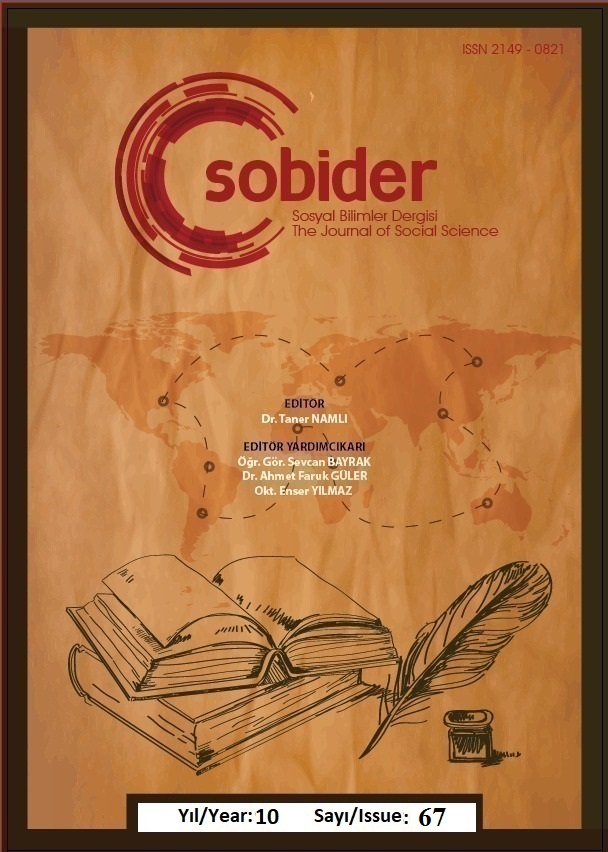HİYERARŞİK OLMAYAN KÜMELEME YÖNTEMİ VE BULANIK KÜMELEME YÖNTEMİNİN KARŞILAŞTIRILMASI: TÜRKİYE MOTORLU KARA TAŞITLARI ÖRNEĞİ
Author :
Abstract
Çok değişkenli istatistik yöntemlerinden olan kümeleme analizi, birimleri incelenen değişken/değişkenler itibari ile kümelere ayırarak, küme içinde birbirlerine benzer alt gruplar oluşturur. Kümeleme analizi yöntemlerinden olan, hiyerarşik olmayan kümeleme de kullanılan k-ortalamalar yönteminde önceden belirlenen küme sayısına göre kesin küme üyelikleri belirlenirken, bulanık kümeleme analizinde Dunn ve Koafmann katsayısı ile gölge istatistiğine göre küme sayısı belirlenir. Çalışmada bu iki kümeleme yöntemi, illerin trafiklerine kayıtlı motorlu kara taşıt sayıları kullanılarak karşılaştırılmıştır. Yapılan analizler sonrasında hem k-ortalamalar yönteminde hem de bulanık kümelemede iki küme elde edildi. K- ortalamalar yönteminde oluşan kümeler arasında istatistiksel olarak anlamlı bir fark yokken, bulanık kümele analizi ile oluşan kümeler arasında ise istatistiksel olarak anlamlı bir fark ortaya çıkmıştır. Bunların dışında Bulanık kümeleme analizinde doğru sınıflama oranı %96,3 olarak bulunmuştur. Çalışmada motorlu kara taşıtların tercih edilmesinin nedeni ülke ekonomisinde ve diğer sektörlerde oldukça önemli bir unsur olmasıdır.
Keywords
Abstract
Cluster analysis, one of the multivariate statistical methods, separates units into clusters based on the examined variable/variables, creating subgroups within the cluster that are similar to each other. In the k-means method, a non-hierarchical clustering method used in cluster analysis, the exact cluster memberships are determined based on a pre-defined number of clusters, while in fuzzy clustering analysis, the number of clusters is determined according to the Dunn and Koafmann coefficients and silhouette statistics. In this study, these two clustering methods are compared using the registered numbers of motor vehicles in traffic for different provinces. After the analysis, two clusters are obtained both in the k-means method and fuzzy clustering. While there is no statistically significant difference between the clusters formed in the k-means method, a statistically significant difference emerges between the clusters formed in the fuzzy clustering analysis. Additionally, the correct classification rate according to discriminant analysis in fuzzy clustering analysis is found to be 96.3%. The reason for choosing motor vehicles in this study is their significant role in the country's economy and other sectors.





